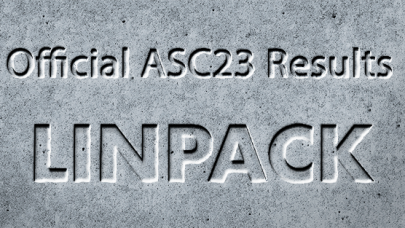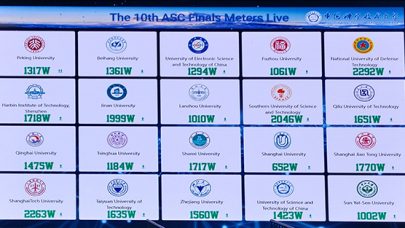
2024 Winter Classic: Texas Two Step
April 18, 2024
Texas Tech University. Their middle name is ‘tech’, so it’s no surprise that they’ve been fielding not one, but two teams in the last three Winter Class Read more…

2024 Winter Classic: The Return of Team Fayetteville
April 18, 2024
Hailing from Fayetteville, NC, Fayetteville State University stayed under the radar in their first Winter Classic competition in 2022. Solid students for sure, Read more…

2024 Winter Classic: Meet Team Morehouse
April 17, 2024
Morehouse College? The university is well-known for their long list of illustrious graduates, the rigor of their academics, and the quality of the instruction. Read more…

ASC23: Who Won & Why?
June 14, 2023
Following up on the press release from the ASC23 organizers with the official competition finish, I wanted to add a little of my own analysis, as usual. On-S Read more…

ASC23: Application Results
June 2, 2023
The ASC23 organizers put together a slate of fiendishly difficult applications for the students this year. The apps were a mix of traditional HPC packages, like Read more…

ASC23: LINPACK Results
May 30, 2023
With ISC23 now in the rearview mirror, let’s get back to the results from the ASC23 Student Cluster Competition. In our last articles, we looked at the compet Read more…

ASC23: Meet the Teams
May 18, 2023
The ASC23 cluster competition was held in a basketball stadium on the campus of the University of Science and Technology of China, located in Hefei, China – Read more…

ASC23: Tenth Anniversary Edition – Still the Toughest
May 17, 2023
The tenth edition of the Asian Supercomputing Challenge took place last week in Hefei, China, and it was tougher than ever. 24 university teams (20 on site, 4 Read more…

- Click Here for More Headlines

Whitepaper
Transforming Industrial and Automotive Manufacturing
In this era, expansion in digital infrastructure capacity is inevitable. Parallel to this, climate change consciousness is also rising, making sustainability a mandatory part of the organization’s functioning. As computing workloads such as AI and HPC continue to surge, so does the energy consumption, posing environmental woes. IT departments within organizations have a crucial role in combating this challenge. They can significantly drive sustainable practices by influencing newer technologies and process adoption that aid in mitigating the effects of climate change.
While buying more sustainable IT solutions is an option, partnering with IT solutions providers, such and Lenovo and Intel, who are committed to sustainability and aiding customers in executing sustainability strategies is likely to be more impactful.
Learn how Lenovo and Intel, through their partnership, are strongly positioned to address this need with their innovations driving energy efficiency and environmental stewardship.
Download Now
Sponsored by Lenovo
Whitepaper
How Direct Liquid Cooling Improves Data Center Energy Efficiency
Data centers are experiencing increasing power consumption, space constraints and cooling demands due to the unprecedented computing power required by today’s chips and servers. HVAC cooling systems consume approximately 40% of a data center’s electricity. These systems traditionally use air conditioning, air handling and fans to cool the data center facility and IT equipment, ultimately resulting in high energy consumption and high carbon emissions. Data centers are moving to direct liquid cooled (DLC) systems to improve cooling efficiency thus lowering their PUE, operating expenses (OPEX) and carbon footprint.
This paper describes how CoolIT Systems (CoolIT) meets the need for improved energy efficiency in data centers and includes case studies that show how CoolIT’s DLC solutions improve energy efficiency, increase rack density, lower OPEX, and enable sustainability programs. CoolIT is the global market and innovation leader in scalable DLC solutions for the world’s most demanding computing environments. CoolIT’s end-to-end solutions meet the rising demand in cooling and the rising demand for energy efficiency.
Download Now
Sponsored by CoolIT
Advanced Scale Career Development & Workforce Enhancement Center
Featured Advanced Scale Jobs:
HPCwire Resource Library
HPCwire Product Showcase
© 2024 HPCwire. All Rights Reserved. A Tabor Communications Publication
HPCwire is a registered trademark of Tabor Communications, Inc. Use of this site is governed by our Terms of Use and Privacy Policy.
Reproduction in whole or in part in any form or medium without express written permission of Tabor Communications, Inc. is prohibited.
























